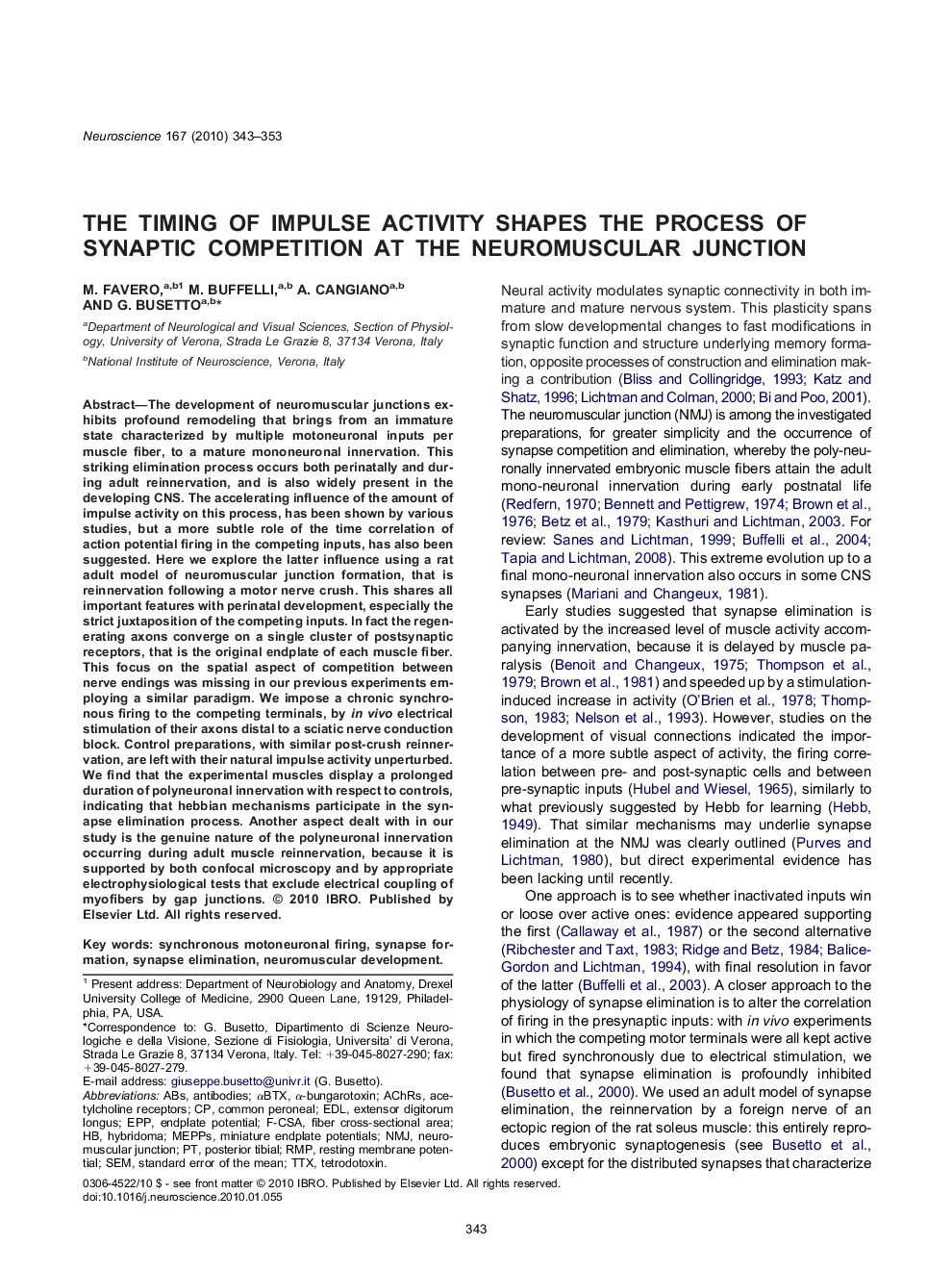| Article ID | Journal | Published Year | Pages | File Type |
|---|---|---|---|---|
| 6277621 | Neuroscience | 2010 | 11 Pages |
The development of neuromuscular junctions exhibits profound remodeling that brings from an immature state characterized by multiple motoneuronal inputs per muscle fiber, to a mature mononeuronal innervation. This striking elimination process occurs both perinatally and during adult reinnervation, and is also widely present in the developing CNS. The accelerating influence of the amount of impulse activity on this process, has been shown by various studies, but a more subtle role of the time correlation of action potential firing in the competing inputs, has also been suggested. Here we explore the latter influence using a rat adult model of neuromuscular junction formation, that is reinnervation following a motor nerve crush. This shares all important features with perinatal development, especially the strict juxtaposition of the competing inputs. In fact the regenerating axons converge on a single cluster of postsynaptic receptors, that is the original endplate of each muscle fiber. This focus on the spatial aspect of competition between nerve endings was missing in our previous experiments employing a similar paradigm. We impose a chronic synchronous firing to the competing terminals, by in vivo electrical stimulation of their axons distal to a sciatic nerve conduction block. Control preparations, with similar post-crush reinnervation, are left with their natural impulse activity unperturbed. We find that the experimental muscles display a prolonged duration of polyneuronal innervation with respect to controls, indicating that hebbian mechanisms participate in the synapse elimination process. Another aspect dealt with in our study is the genuine nature of the polyneuronal innervation occurring during adult muscle reinnervation, because it is supported by both confocal microscopy and by appropriate electrophysiological tests that exclude electrical coupling of myofibers by gap junctions.
